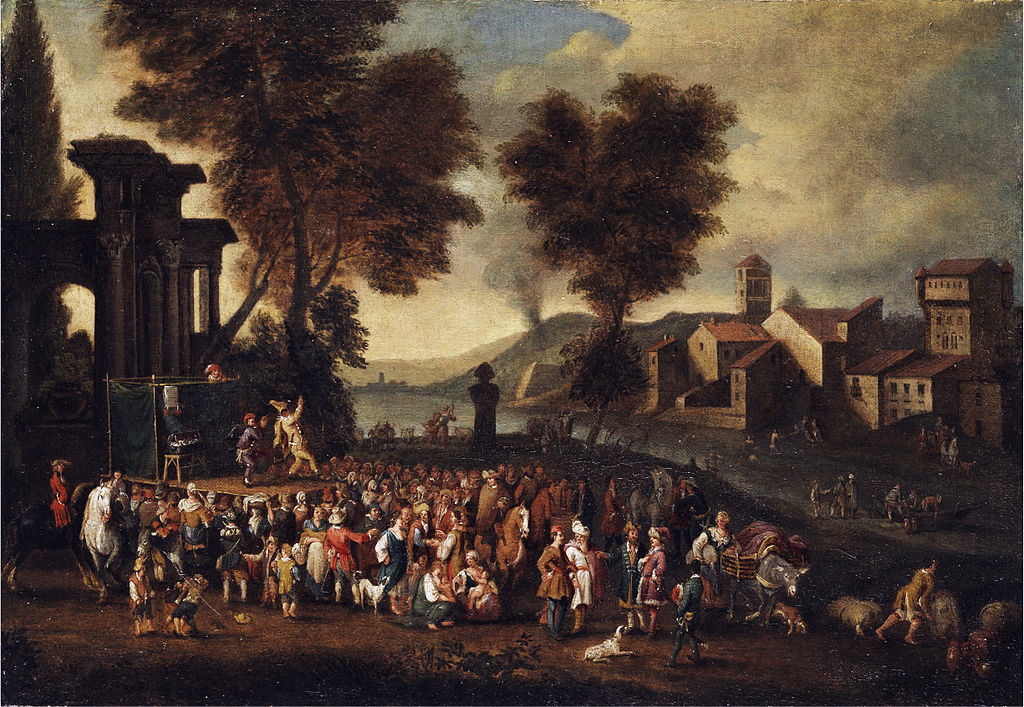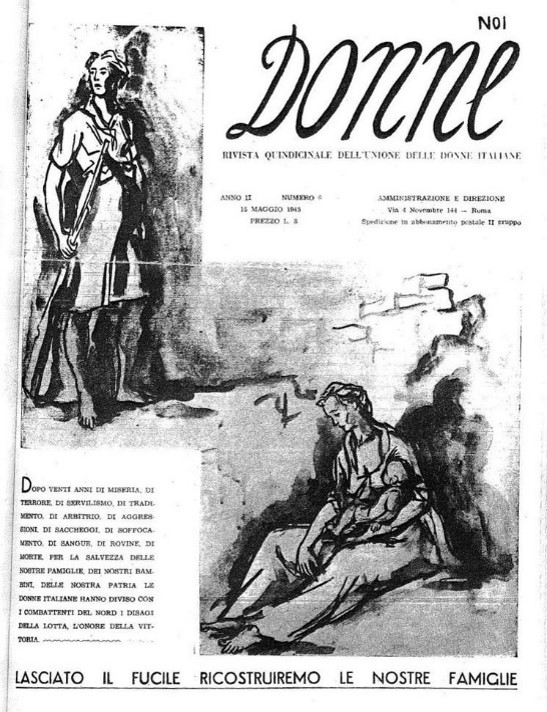Overview
Comedy Italian style is not...
 Commedia dell'arte Scene in an Italian Landscape [5]
For example, in Divorzio all'italiana (Divorce Italian Style), Director Pietro Germi uses
the stereotypical southern aristocrat character in a plot to divorce his wife by killing
her because divorce at the time was illegal in Italy. All of these films have a sad
undertone due to the misfortune of the lead characters, and we laugh when they fail
or blunder because it is funny. They have high hopes for the future, but in the end
are left without their hope achieved or their longing fulfilled, just like how the
ended up the same way. Although the critics generally rated the the first comedy
films poorly because of the superficiality of the jokes or simplification of the
situation, the general population empathized well with the character types and
came to enjoy this new genre of Italian cinema. Italians could understand where
these characters were coming from, why they made those decisions, and laugh along
with the outrageous outcomes.[1]
Commedia dell'arte Scene in an Italian Landscape [5]
For example, in Divorzio all'italiana (Divorce Italian Style), Director Pietro Germi uses
the stereotypical southern aristocrat character in a plot to divorce his wife by killing
her because divorce at the time was illegal in Italy. All of these films have a sad
undertone due to the misfortune of the lead characters, and we laugh when they fail
or blunder because it is funny. They have high hopes for the future, but in the end
are left without their hope achieved or their longing fulfilled, just like how the
ended up the same way. Although the critics generally rated the the first comedy
films poorly because of the superficiality of the jokes or simplification of the
situation, the general population empathized well with the character types and
came to enjoy this new genre of Italian cinema. Italians could understand where
these characters were coming from, why they made those decisions, and laugh along
with the outrageous outcomes.[1]During the 1970s, comedy Italian style started taking a turn to a more grotesque overly exaggerated comedy and satire. We can see this in some clips of The Seduction of Mimì when he goes back south and tries to kill his wife or when he goes and sleeps with the wife of his wife's lover just to avenge his honor. In each of these films and many others, the audience can see these character stereotypizations of common type of people in Italy, only with the worst traits exaggerated. More modern comedy films continue to take a stab at contemporary issues like the LGBT movement, government corruption, and the modern family.
 Noi donne, 15 May 1945, front cover
Noi donne, 15 May 1945, front cover